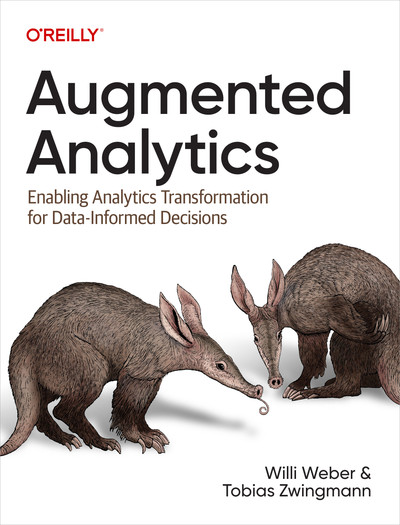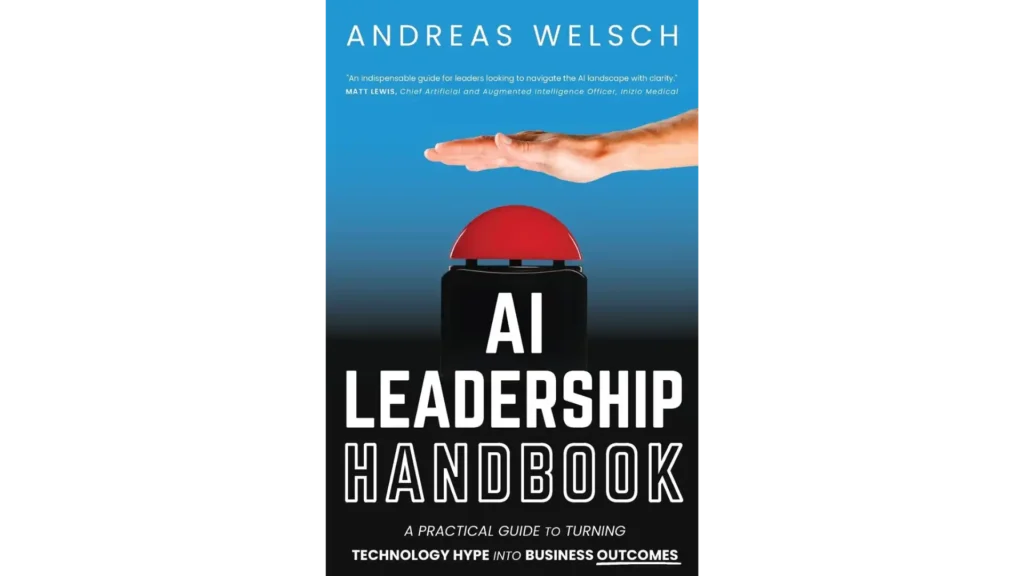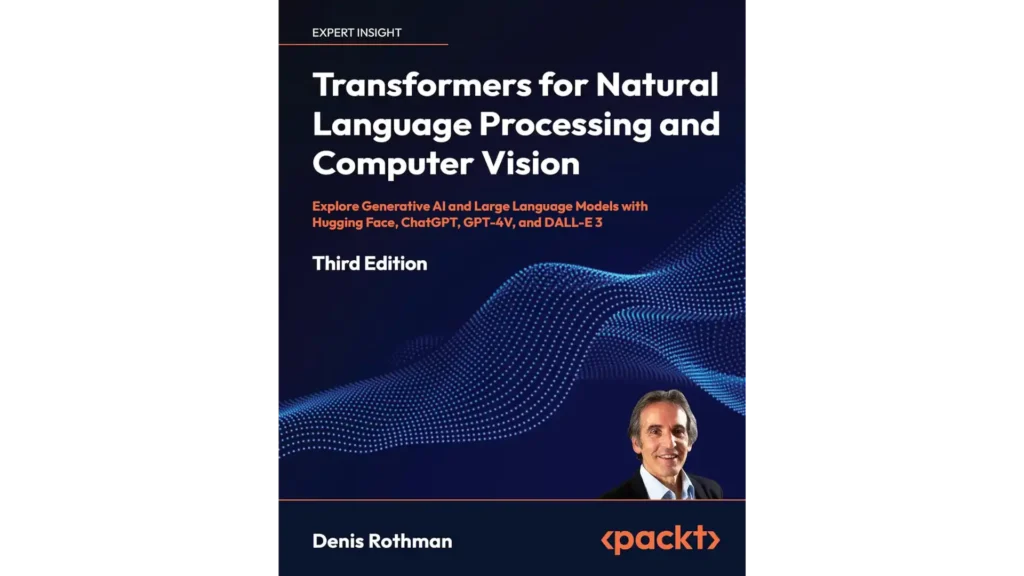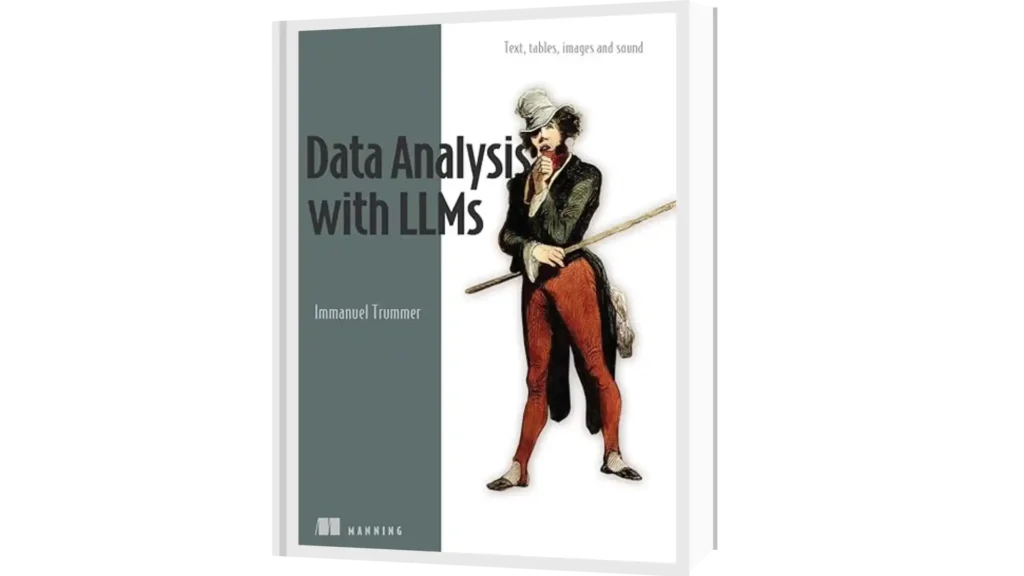
Most companies claim to be data-driven, yet reports sit unused, dashboards gather dust, and decisions still rely on gut instinct. Augmented Analytics (affiliate link) by Willi Weber and Tobias Zwingmann shows how to close this gap, turning scattered efforts into insights that truly drive action.
The authors define augmented analytics as using AI and automation to extend human decision-making. Rather than serving only data experts, it embeds intelligence into workflows so everyone can benefit, helping organizations move from data-driven to truly insight-driven.
Core Lessons from Augmented Analytics
This book goes beyond tools and dashboards. It provides a structured roadmap for analytics transformation, covering maturity stages, cultural change, and technical innovations such as augmented workflows and frames.
1. Business Transformation Demands Augmented Analytics
Digital transformation today is faster and more disruptive than past industrial shifts. The convergence of AI, cloud, and IoT, combined with exploding data and rising customer expectations, is reshaping industries from healthcare to finance. Traditional analytics and upskilling alone cannot keep pace with this scale of change.
The authors argue that real transformation requires augmented analytics. Instead of relying on a small group of experts, organizations must embed intelligence into everyday workflows. This makes insights accessible and actionable for everyone, enabling the shift from being merely data-driven to becoming truly insight-driven.
2. The Analytics Problem and the Maturity Path
Analytics often falls short because it is disconnected from business needs. Many companies produce reports and dashboards, but these rarely influence decisions. The authors call this the analytics dead end, where outputs exist but impact is limited. To move forward, organizations must first clarify why they use analytics, such as meeting customer expectations, improving efficiency, ensuring compliance, or supporting innovation.
The book introduces an analytical maturity model with four stages: Data Reactive, Data Active, Data Progressive, and Data Fluent. Each stage reflects how ready an organization is to use data effectively, supported by the SPEC dimensions: Strategy, People and Organization, Data Ecosystem, and Cultural Change.
Knowing the current stage helps avoid chasing advanced tools too early. The biggest leap is from Stage 3 to Stage 4, and augmented analytics is presented as the key to making that shift by embedding intelligence into workflows and enabling decisions at scale.
3. Understanding Augmented Analytics
Augmented analytics means using technology to give people the analytical leverage they need to do a business task better. It is human centered, tool enabled, and context specific. The goal is not to replace judgment but to find the right level of assistance so work becomes faster, clearer, and more reliable.
Effective augmentation shows five traits: insightful, integrated, invisible, indispensable, and inclusive. Insights are delivered where people already work, without forcing them to switch tools. When done well, it becomes essential to daily decisions and opens participation to non experts.
The book links this to practice through augmented workflows and augmented frames. Workflows embed assistance inside real tasks, while frames supply the right data for the right object at the right moment. Automation provides consistency and speed, AI handles understanding and prediction, and both must be balanced to avoid over-reliance, bias, or information overload.
New to AI? Start with AI Fundamentals: A Beginner’s Guide to Artificial Intelligence
4. People and Culture at the Core of Analytics
Analytics transformation depends less on tools and more on people. The book identifies four roles that shape success: leaders who set vision, translators who bridge business and data, professionals who build solutions, and users who apply insights daily. Each role must work together to unlock real value.
A Center of Excellence (CoE) often provides the structure to connect IT with business units, prevent silos, and guide maturity. As organizations grow, centralized efforts can evolve into federated models, balancing governance with flexibility. Strong data literacy and storytelling ensure that insights reach everyone, not just technical experts.
Lasting change also requires culture. Drawing on influence models, the authors show how to create momentum through awareness, incentives, skills, and role modeling. Programs such as leadership workshops, translator training, and mentoring help build habits that make augmented analytics part of everyday work.
5. Making Workflows Augmented
Augmented analytics is most powerful when it’s woven directly into the flow of work. Instead of forcing people to step outside their daily tools, augmentation brings insights into the exact place and time they’re needed. For example, a sales manager discussing strategy in Teams can instantly pull in campaign performance metrics without leaving the conversation.
This is what the book calls augmented workflows, processes enhanced by AI, automation, and analytics to support decisions in real time. Alongside this sits the idea of augmented frames, which deliver the right data to the right person in context. Together, these concepts reduce friction, eliminate delays, and make data-driven action natural instead of disruptive.
The benefits go beyond speed. Augmented workflows simplify complex analysis, integrate seamlessly into existing tools, and make insights available to a wider range of users. They help improve decision-making quality, foster a stronger data culture, and ultimately create an environment where analytics becomes invisible yet indispensable.
6. Augmented Frames in Action
Augmented frames let organizations focus on the most relevant slice of business objects and run trusted engines on that slice to return ready-to-use insights. Frames can be saved, shared, and combined so different teams ask consistent questions and get consistent answers. Because the engines carry the business logic, results are governed, repeatable, and less prone to error.
This approach helps integrate analytics into existing systems while giving domain teams ownership of their results. Frames can be free, ID based, static, or dynamic, and engines may be analytical, predictive, generative, or visualization focused. Together they create a flexible and reusable structure for scaling analytics across the business.
To begin, start small with simple frames and a few engines, then add more advanced types as adoption grows. Over time, augmented frames help move the organization from scattered data access to governed, insight-driven workflows that are both consistent and adaptable.
Key enablers include automation and AI, with five archetypes of artificial intelligence explained in detail. At the same time, the book highlights limits and challenges such as bias, governance issues, and integration hurdles that leaders must plan for.
7. Real-World Augmented Analytics: Case Studies and Examples
Augmented analytics moves beyond concepts into practice through concrete case studies. Industries such as insurance, project management, and sales are already applying AI, automation, and analytics to address real challenges and drive better outcomes.
The underwriting process shows how location data checks, benchmarking, and automated pricing can transform a traditionally manual, time-consuming task into a streamlined, insight-driven workflow. Similar applications in forecasting and sales prove that these methods are flexible and adaptable across domains.
The authors emphasize that augmented analytics works best when embedded into everyday processes, delivering timely insights that guide smarter, faster, and more consistent decisions.
Who Should Read Augmented Analytics
Augmented Analytics speaks to both the strategic and technical sides of analytics transformation. On one hand, it provides a strong foundation for understanding analytical maturity, culture, and organizational change. On the other, it dives into technical concepts and frameworks that engineers and data professionals can apply directly to workflows and systems.
This makes the book valuable for analysts, managers, and decision-makers shaping digital or analytical initiatives, as well as for technical teams implementing solutions. Even readers without programming backgrounds will find the explanations clear, while those with skills in Python or R can explore the deeper technical layers. It’s written for anyone who wants a complete perspective on how to make analytics truly work across an organization.
What Makes This Book Unique?
- Comprehensive Perspective: Balances methodological, technical, and business aspects to provide a 360-degree view of analytics transformation.
- Focus on Analytical Maturity: Helps organizations assess and improve their analytics capabilities through actionable steps.
- Expert Insights: Combines years of experience from the authors in AI, machine learning, and analytics transformation, offering practical advice backed by real-world applications.
New to Machine Learning? Read Machine Learning for Beginners: A Simple Guide
Why You Should Read It
If you’re ready to accelerate your organization’s journey to becoming truly insight-driven, Augmented Analytics is a must-read. With practical frameworks, actionable advice, and real-world examples, this book equips you to turn data into a strategic advantage.
Final Thoughts
Augmented Analytics is not just about smarter tools; it is about building smarter organizations. The book shows that true transformation happens when insights are embedded into everyday decisions, supported by the right culture, people, and processes.
For leaders, analysts, and innovators, the key lesson is clear: do not stop at being data-driven. Aim to become insight-driven. By applying the frameworks and examples from this book, organizations can bridge the gap between raw data and real impact, unlocking a future where analytics fuels growth, agility, and better decision-making at every level.
Get the book
Augmented Analytics: Enabling Analytics Transformation for Data-Informed Decisions (affiliate link) by Willi Weber and Tobias Zwingmann is available on Amazon. If you want to move beyond dashboards and build truly insight-driven organizations, this book provides a practical roadmap worth reading.
Disclosure: This article about Augmented Analytics book contains affiliate links. If you purchase through them, we may earn a small commission at no extra cost to you. It supports us in creating more free content on Noro Insight.


